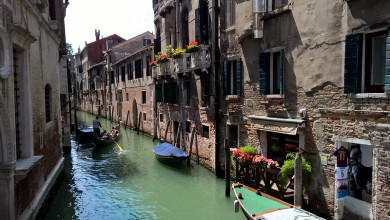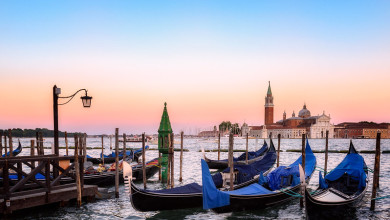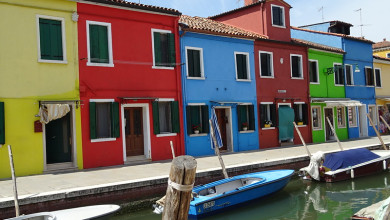Venice: the essential things to know
Did You Know?
How To Get Here
By car
The Ponte della Libertà bridge connects Venice to the mainland and ends at Piazzale Roma, the only part of the city where cars can enter. There are several indoor and outdoor car parks in Piazzale Roma that vary in the parking fees asked: find the fees they apply and choose one that is most convenient for you. You can also park at the Tronchetto, which you reach by turning right immediately at the end of the Ponte della Libertà bridge, just before you get to Piazzale Roma. At the Tronchetto there are some indoor and outdoor car parks. You can get to the city center easily from both these points by vaporetto (the Venice water buses), water taxi or on foot.
By plane
You can get to the city from the "Marco Polo" Airport (VCE) in various ways: by water taxi, by the Alilaguna motorboat or using the "Venezia Air Terminal" shuttle bus.
By train
If you come to Venice by train, you will arrive at the Santa Lucia Railway Station, a large building located at the beginning of the Grand Canal in the Santa Croce area of the city. It is easy to reach the city center on foot walking down the Strada Nuova or by taking the water bus from one of the jetties that are opposite the station.
How to get around
At a first glance, Venice may seem a kind of complicated labyrinth, but you will be able to move around easily by following our information and hints. The old city center is divided into six quarters known as sestieri: Castello, Cannaregio, San Marco, Santa Croce, Dorsoduro, San Polo.
Some islands are also part of the city: Giudecca and San Giorgio, that can be seen from Piazza San Marco, the islands of Murano, Burano, Torcello and the Lido, home to Venice's beaches and where it is possible to go by car, taking the ferry from the Tronchetto.
There are many water buses (vaporetto) to take you quickly to any place in Venice. The vaporetto lines 1 and 82 travel along the Grand Canal from Piazzale Roma to the Lido, allowing passengers to view the wonderful buildings that stand alongside the Canal until it reaches the San Marco Basilica, where it is possible to catch a glimpse of the wonderful, majestic Piazza San Marco.
An interesting way to cross the Grand Canal from one side to the other is by using the gondola ferry, that is cheap but very picturesque. These ferries can be found at various points on the Grand Canal: from Santa Maria del Giglio to the Salute and vice versa (until 1 pm); from Ca' Rezzonico to Palazzo Grassi and vice versa (until 1 pm); from Riva del Vin to the Town Hall and vice versa (until 1 pm); from the Rialto Market to Strada Nova and vice versa (up to 7.45 pm); from San Marcuola to Fontego dei Turchi and vice versa (until 1 pm); from the train station to San Simeone and Giuda and vice versa (until 1 pm).
Getting around the city on foot is however the most efficient and charming way of getting to know the city. The numbers of the streets in Venice starts with 1 in each Sestiere and goes upwards progressively.
The Venetian terms
Here is a short glossary that will help you to understand the indications written on the street signs that you will find in the city:
- Calle: the typical pedestrian street that can be streta (narrow), larga (wide) or longa (long);
- Campo: an open space that is known as a piazza in other towns. In Venice, however, there is only 1 piazza: San Marco;
- Campiello: a small square;
- Fondamenta: a walkway that runs alongside canals and that can be of various sizes;
- Ruga: a variation of the French word "rue", a busy street with a lot of houses and shops;
- Rio: a small internal canal. When "Rio" is followed by the word "terà" (filled) it means that this street used to be a canal;
- Salizada: the largest street;
- Sotoportego: this is a dialect term for the walkway under a portico.




